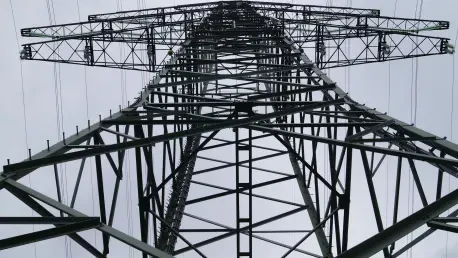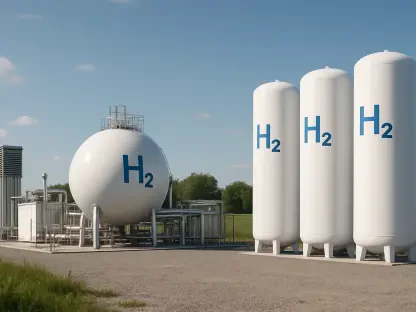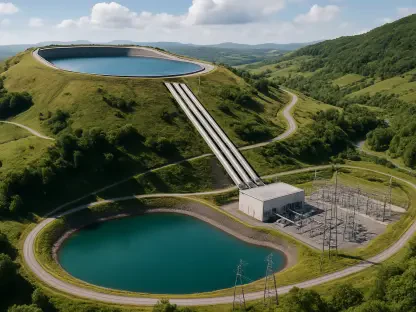As the world delves deeper into the era of technological and energy advancements, the evolution of distribution feeder protection systems is becoming more apparent and necessary. These systems, crucial for electricity distribution from substations to end consumers, are pivotal in maintaining safety, reliability, and efficiency within power networks. With the global energy agenda shifting toward sustainable sources such as solar and wind, traditional feeder protection methods are rapidly giving way to more sophisticated digital solutions. This shift is not just about adaptability to renewable energy sources but also addresses the demand for uninterrupted and high-quality power supply across urban and industrial landscapes. The trajectory from now to 2032 suggests a transformation that balances technological innovation with market needs, driven by various factors ranging from increased urbanization to the need for responsive and intelligent power grids.
Technological Advancements and Their Impact
In the current landscape, the transition from electromechanical relays to digital relays and Intelligent Electronic Devices (IEDs) marks a significant change in feeder protection technology. This transition is crucial, offering features like adaptive protection, sophisticated event recording, and communication protocols such as IEC 61850. These features collectively enhance the system’s ability to detect faults and isolate them efficiently, minimizing outages and service disruptions. Digital technologies offer immense benefits in terms of real-time analytics, condition-based monitoring, and predictive fault detection, all of which contribute significantly to robust power distribution systems. As these technologies evolve, they facilitate proactive maintenance strategies, extending the life and reliability of power systems while reducing operational costs and response times.
The incorporation of cutting-edge technologies like the Internet of Things (IoT) and Artificial Intelligence (AI) further revolutionizes the distribution feeder protection landscape. These advancements enable the integration of real-time analytics within feeder protection systems, offering improved decision-making capabilities. The role of AI, in particular, cannot be overstated, as it aids in predictive analytics, enabling the anticipation of potential faults before they escalate into widespread issues. IoT devices can enhance communication and operational efficiency by connecting disparate components within a grid, thereby facilitating a more collaborative and integrated approach. Embracing these technologies offers the potential to unlock new heights of efficiency and control in power distribution, ensuring a stable and sustainable energy future.
Convergence of Digital Technologies and Energy Transition Trends
The convergence of digital technologies with energy transition trends underscores the movement toward smarter and more agile energy systems. This evolution is characterized by the incorporation of advanced automation capabilities within feeder protection systems, driven by both technological progress and market demand for adaptive solutions. A notable trend is the emergence of cloud-based protection management platforms, which allow utilities to manage, monitor, and control feeder protection devices remotely. These platforms enhance response times during faults or outages by providing faster, data-driven decision-making. Additionally, they enable updated system performance by facilitating ongoing adjustments and configurations in real-time, improving overall grid resilience.
A critical emphasis in modernizing the distribution feeder protection systems is addressing cybersecurity concerns. As power grids become increasingly digitized, protecting sensitive data and ensuring secure communication channels are paramount to prevent unauthorized access and mitigate cybersecurity threats. This focus on cybersecurity extends to designing robust architectures and adopting sophisticated encryption methods, ensuring that the expanding digital infrastructure can operate securely and reliably. The collaboration between technology providers and regulatory bodies is essential to establish and enforce standards that safeguard these systems from potential threats, thus fostering trust and reliability in the modern power grid.
Market Segmentation and Regional Developments
The segmentation of the Distribution Feeder Protection System Market is vital in understanding how the evolving needs across regions influence global growth. Market segmentation encompasses system architecture, technology types, protection functions, application methods, and installation types. For instance, Intelligent Electronic Devices (IEDs) and Communication-Enabled Devices (CEDs) are at the forefront of technological segments. Protection functions include overcurrent protection, ground fault protection, and load shedding, while applications span overhead lines, underground cables, and substations. The segmentation also reflects installation types, distinguishing between new installations and retrofitting existing systems, each carrying distinct challenges and opportunities.
Regionally, the market for distribution feeder protection systems exhibits varied growth dynamics influenced by unique drivers and challenges. North America and Europe are likely to lead with strong regulatory support and high adoption rates of renewable energies. Their focus on smart grid development aligns with their energy transition strategies. Meanwhile, emerging economies in the Asia-Pacific and Africa are witnessing increased investments aimed at modernizing aging infrastructure, driven by rapid industrialization and urbanization. This regional diversity adds complexity and depth to market dynamics, suggesting that tailored strategies are necessary to capitalize on opportunities while mitigating inherent challenges.
Challenges and Constraints
As promising as the future outlook is, several challenges could impede the progression of the Distribution Feeder Protection System market. One of the primary hurdles involves the high initial investment costs associated with deploying advanced protection technologies. This financial burden is particularly pronounced for utilities in developing nations where budgets are already constrained, delaying system upgrades and modernizations. Upgrading existing infrastructures to accommodate the latest technology often requires considerable investments, affecting their cost structures and operational budget allocations.
Compatibility issues present another significant challenge, with the lack of standardized communication protocols potentially complicating integration processes. Devices from different manufacturers must work seamlessly in conjunction with one another to maintain efficient and reliable operations. These interoperability concerns are critical, especially in multivendor environments where operational coordination can be affected by such discrepancies. Furthermore, a shortage of skilled personnel compounds these issues, particularly in implementing and maintaining sophisticated systems. Addressing these obstacles involves strategic investment in training and development, ensuring a well-equipped workforce to support these evolving systems.
A Glimpse into the Future
The shift from electromechanical to digital relays and Intelligent Electronic Devices (IEDs) marks a transformation in feeder protection technology. This change is key, offering features like adaptive protection, advanced event recording, and communication protocols such as IEC 61850, enhancing the system’s ability to detect and isolate faults efficiently, thus reducing outages and disruptions. Digital technology provides real-time analytics, condition-based monitoring, and predictive fault detection, significantly strengthening power distribution systems. As these technologies develop, they support proactive maintenance strategies that extend the life and reliability of power systems while cutting operational costs and response times.
Innovations like the Internet of Things (IoT) and Artificial Intelligence (AI) are also reshaping distribution feeder protection. These tools enable real-time analytics in feeder protection systems, improving decision-making. AI plays a crucial role in predictive analytics, helping anticipate faults before they become major issues. IoT devices connect grid components, enhancing communication and efficiency. Embracing these technologies unlocks greater efficiency and control, ensuring a stable and sustainable energy future.









